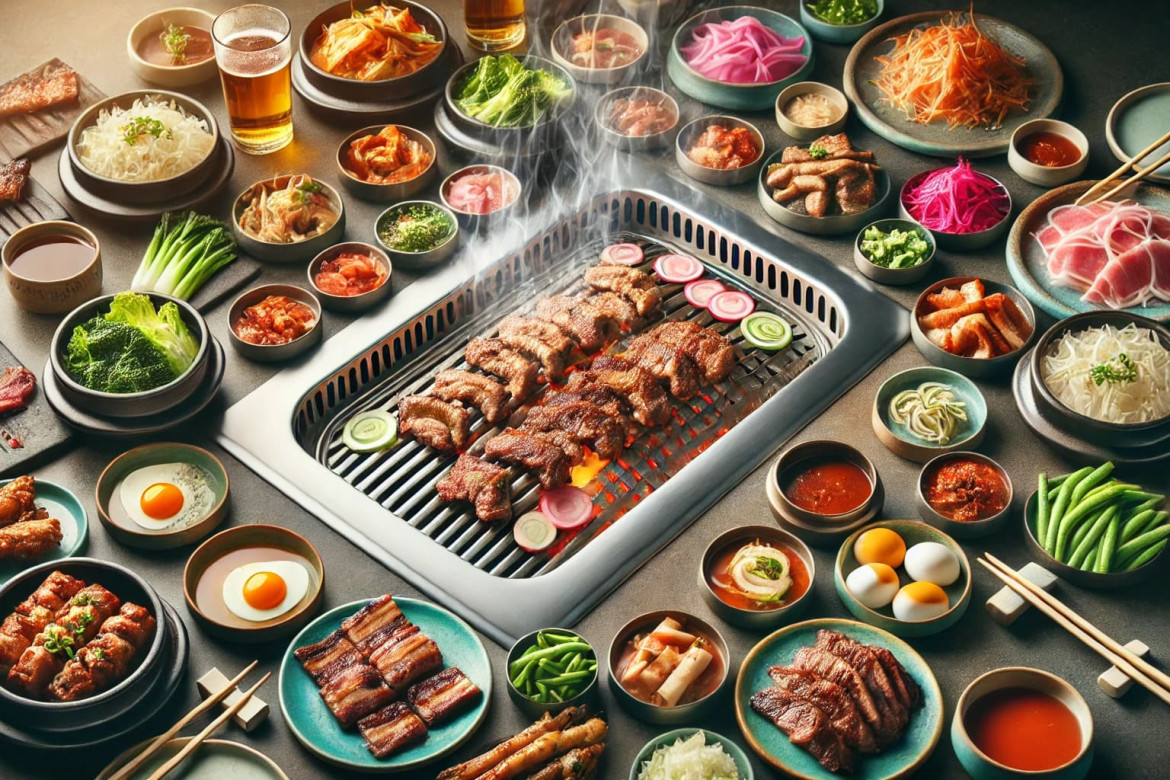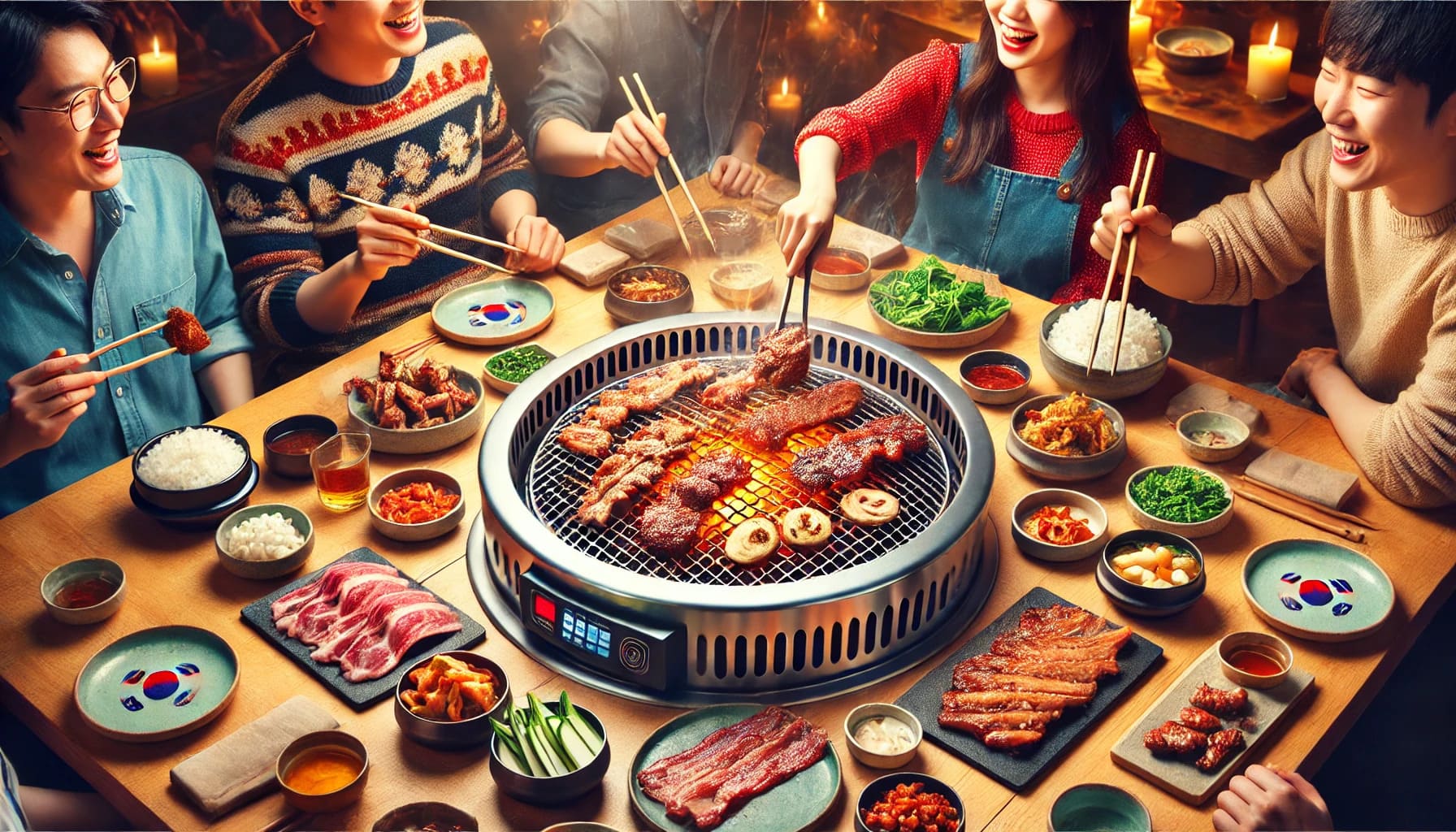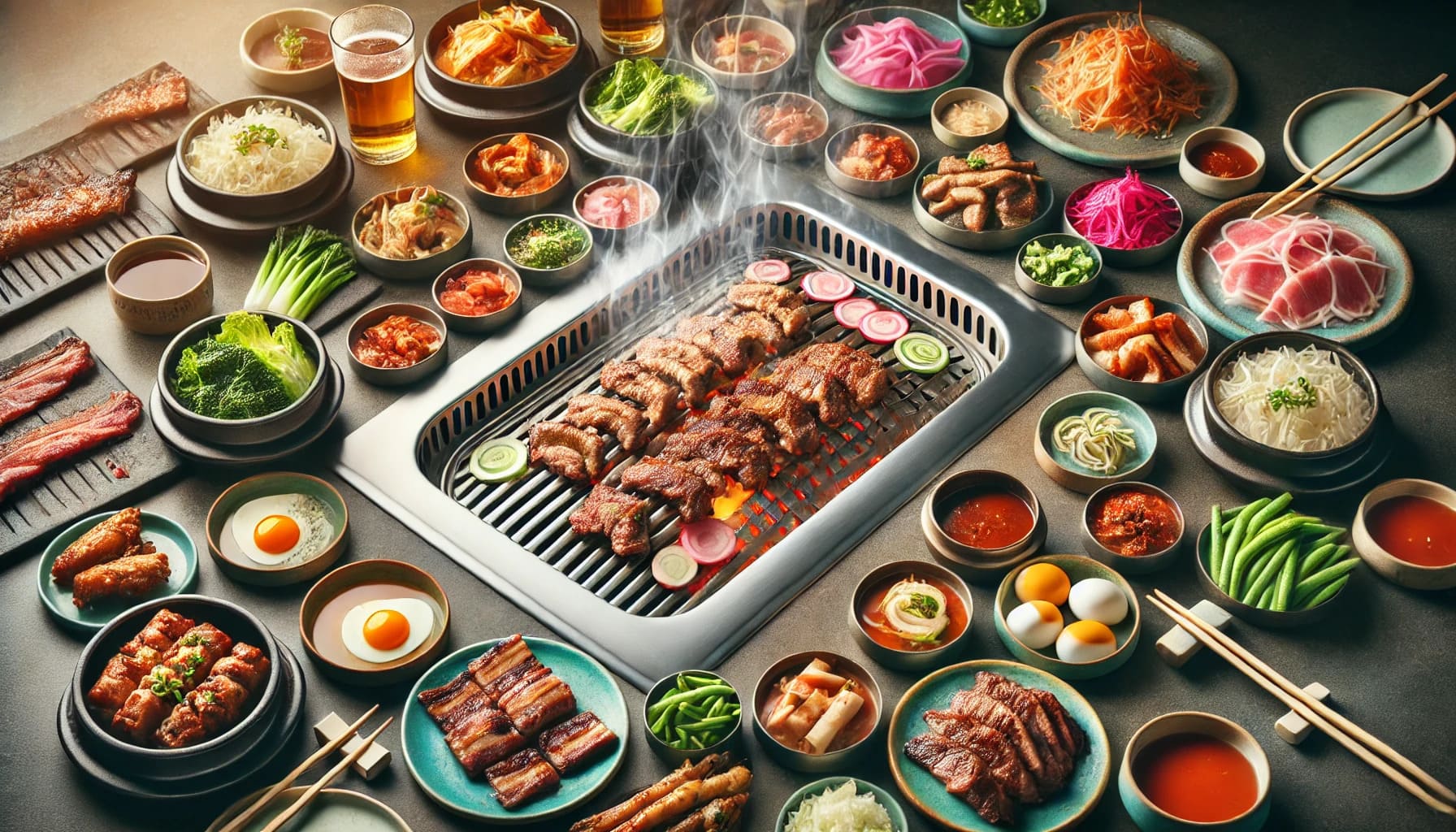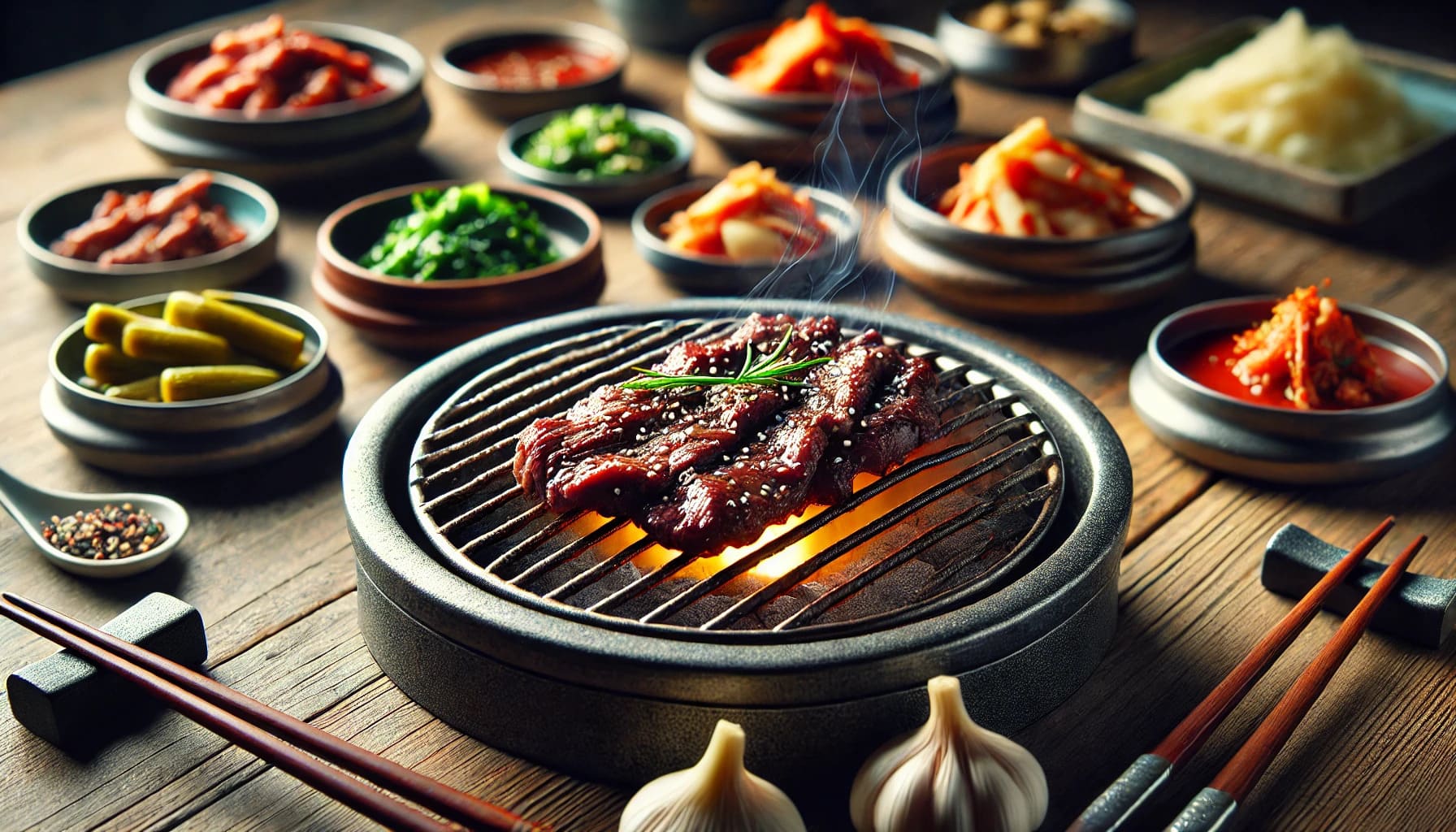
Korean BBQ is a unique and interactive dining experience that combines the joy of grilling various meats like beef, pork, and chicken at the table with the rich traditions of Korean culture. This guide explores everything from selecting the best cuts of meat, understanding the role of banchan (side dishes), to mastering the art of grilling and wrapping. It also delves into the etiquette and health benefits associated with Korean BBQ, providing a comprehensive overview for anyone looking to enjoy this flavorful and communal meal.
Korean BBQ, a culinary tradition that has captured the hearts of food enthusiasts worldwide, offers an interactive dining experience that is as much about the social aspect as it is about the flavors. Whether you're new to this cultural phenomenon or looking to refine your technique, understanding the nuances of Korean BBQ is essential to fully appreciating its rich heritage. This guide will walk you through everything you need to know to enjoy Korean BBQ like a pro.

Korean BBQ is not just a meal; it's a social event where friends and family gather around a table to grill and share a variety of meats and vegetables. The experience is deeply rooted in Korean culture, where communal dining is a way of life. Understanding the traditional methods and etiquette will enhance your enjoyment and respect for this culinary art.
If you ever find yourself in Las Vegas, one of the best places to experience authentic Korean BBQ is at Hwaro 2. This restaurant is renowned for its commitment to traditional Korean flavors, offering an array of premium meats and fresh banchan that reflect the rich culinary heritage of Korea. Hwaro 2 brings the full Korean BBQ experience to life, with a warm atmosphere that makes it perfect for both newcomers and seasoned enthusiasts.
At the heart of Korean BBQ is the grill, usually built into the table or provided as a portable unit. This grill is used to cook various cuts of meat, most commonly beef, pork, and chicken, which are marinated in a variety of sauces that range from sweet to savory. The grilling process is often a group effort, with everyone taking part in the cooking and serving.
Banchan, the assortment of side dishes that accompany the main meal, plays a crucial role in the Korean BBQ experience. These small dishes are meant to complement the grilled meats, offering a balance of flavors and textures. Kimchi, pickled radishes, and steamed eggs are just a few examples of banchan that you'll encounter. Each banchan adds a unique element to the meal, creating a symphony of tastes that elevate the dining experience.
To truly appreciate Korean BBQ, it's important to follow the traditional steps that enhance both the flavor and social experience.
The first step in any Korean BBQ is preparing the grill. Whether at a restaurant or home, make sure the grill is hot before placing any meat on it. The type of grill can vary, but charcoal grills are often preferred for their ability to impart a smoky flavor to the meat.
Choosing the right cuts of meat is crucial. It's recommended to start with beef, such as galbi (short ribs) or bulgogi (marinated thin slices of beef). These cuts are tender and flavorful, making them ideal for grilling. Pork belly (samgyeopsal) is another popular choice, known for its rich, fatty texture.
Grilling is where the magic happens. Place the meat on the grill and let it cook without moving it too much. Cooking the meat to medium-rare is often suggested to retain its juices and natural flavors. As the meat cooks, use tongs to flip it carefully, ensuring an even grill.
Once the meat is grilled to perfection, the next step is to wrap it. Lettuce leaves or perilla leaves are often used as wraps. Place a piece of meat in the leaf, add some ssamjang (a thick, spicy paste), and a slice of garlic or chili for an extra kick. Wrap it up and enjoy the burst of flavors with every bite.
No Korean BBQ is complete without the perfect pairing of banchan. Kimchi provides a spicy contrast to the rich meat, while pickled radishes add a refreshing crunch. Experiment with different combinations of meat and banchan to discover your favorite flavors.

Part of what makes Korean BBQ so special is the etiquette that surrounds it. Observing these customs not only shows respect for the culture but also enhances the overall experience.
In Korean BBQ, grilling is a shared responsibility. It's encouraged for everyone at the table to take part in cooking, serving, and ensuring that all guests are well-fed. This communal approach fosters a sense of unity and cooperation.
One of the key elements of Korean dining etiquette is serving others before oneself. When grilling, it's recommended to offer the first cooked pieces to fellow diners, particularly the elders, as a sign of respect. This gesture embodies the spirit of jeong, a Korean concept of compassion and empathy.
Soju, a popular Korean alcoholic beverage, is often enjoyed alongside BBQ. Pouring drinks for one another is customary, with younger diners typically pouring for their elders first. Always use both hands when pouring or receiving a drink to show respect.
While Korean BBQ is undeniably delicious, it also offers several health benefits when consumed in moderation.
The various meats used in Korean BBQ are excellent sources of protein, which is essential for muscle growth and repair. Beef and pork also provide vital nutrients such as iron, zinc, and B vitamins. Additionally, the variety of vegetables and banchan served alongside the meat adds a range of vitamins, minerals, and fiber to the meal.
Many banchan dishes, such as kimchi, are fermented, which means they are rich in probiotics. These beneficial bacteria can improve gut health, aid digestion, and boost the immune system. Incorporating these fermented foods into your diet can have long-lasting health benefits.
One of the unique aspects of Korean BBQ is the balance of flavors and nutrition. The combination of grilled meats with fresh vegetables and fermented sides creates a meal that is both satisfying and healthy. By choosing lean cuts of meat and incorporating plenty of banchan, it's possible to enjoy a flavorful meal that also supports a balanced diet.
Korean BBQ offers a wide range of dishes, each with its own distinct flavor and cooking method. Here are some must-try options:
Galbi, or Korean short ribs, is a quintessential BBQ dish that is marinated in a sweet and savory sauce made from soy sauce, garlic, sugar, and sesame oil. The marinade tenderizes the meat and infuses it with rich flavors. Galbi is typically grilled on the bone, which adds extra depth to the taste.
Samgyeopsal is one of the most popular cuts for Korean BBQ. The thick slices of pork belly are grilled until crispy on the outside while remaining juicy inside. This dish is often enjoyed with a dipping sauce made from sesame oil, salt, and pepper, and wrapped in lettuce with garlic and ssamjang.
Bulgogi, meaning "fire meat," is thinly sliced beef marinated in a mixture of soy sauce, sugar, garlic, and other seasonings. The meat is grilled over high heat, creating a caramelized exterior with a tender, flavorful interior. Bulgogi is typically served with rice and a variety of banchan.

Hosting a Korean BBQ at home can be a fun and rewarding experience. Here are some tips to ensure your BBQ is a success:
Investing in a quality tabletop grill is essential for recreating the Korean BBQ experience at home. A grill with adjustable heat settings and a non-stick surface is recommended to make cooking easier. Additionally, ensure all the necessary utensils are available, such as tongs, scissors for cutting meat, and plenty of serving dishes for the banchan.
Preparation is key to a successful BBQ. It's advisable to marinate the meats several hours or even a day in advance to allow the flavors to fully develop. Prepare the banchan and other accompaniments ahead of time, so they are ready to serve as soon as the grilling begins.
Korean BBQ is as much about the atmosphere as it is about the food. Set the table with a variety of banchan, provide plenty of cold beverages, and encourage guests to participate in the grilling. Playing some Korean music in the background can also enhance the cultural experience.
Korean BBQ has evolved over the years, influenced by both traditional Korean cuisine and modern culinary trends. Understanding this evolution helps in appreciating the rich history and innovation behind this beloved dining experience.
Korean BBQ has its roots in ancient Korea, where grilling meat over an open flame was a common cooking method. The practice evolved over time, incorporating various marinades and cooking techniques. The modern version of Korean BBQ, with its tabletop grills and extensive banchan, became popular in the mid-20th century and has since become a global phenomenon.
In recent years, Korean BBQ has seen a surge in popularity outside of Korea, leading to new innovations and adaptations. Chefs around the world have experimented with different marinades, grilling techniques, and fusion dishes, blending traditional Korean flavors with other culinary traditions. This fusion has introduced Korean BBQ to a wider audience, making it a staple in many countries.
Korean BBQ is more than just a meal; it's a celebration of flavors, culture, and community. Whether enjoyed at a restaurant or in the comfort of one's home, understanding the nuances of this culinary art enhances the experience. By following the steps and tips outlined in this guide, it is possible to fully appreciate the rich traditions and vibrant flavors that make Korean BBQ so special. So, gather friends and family, fire up the grill, and immerse yourself in the world of Korean BBQ.